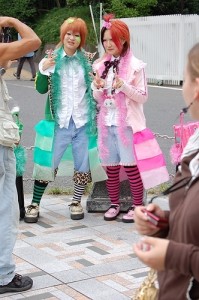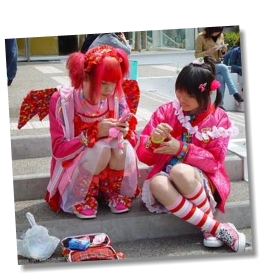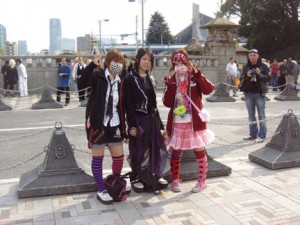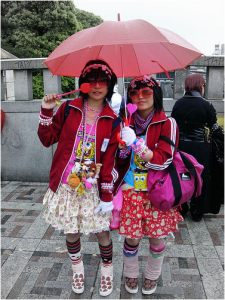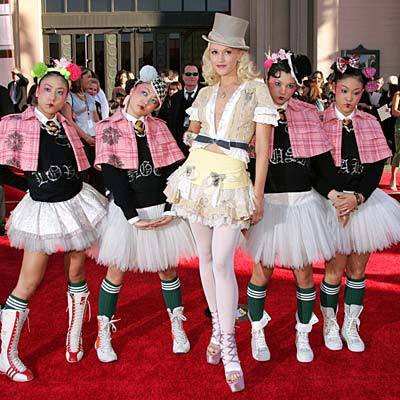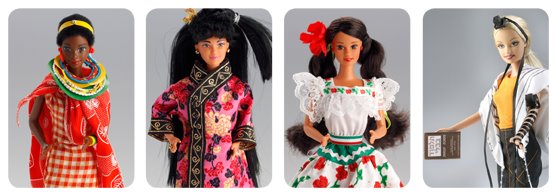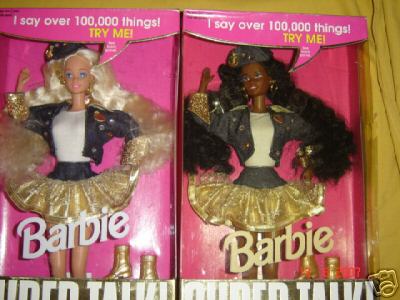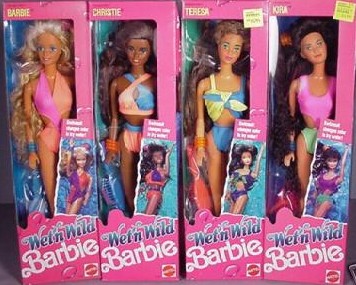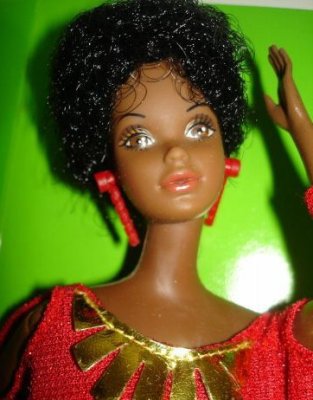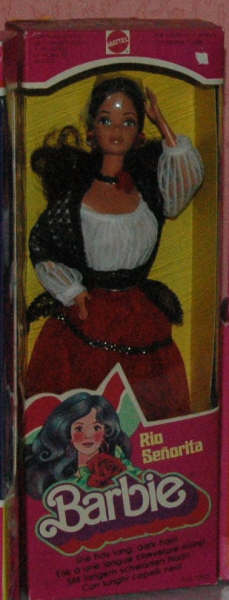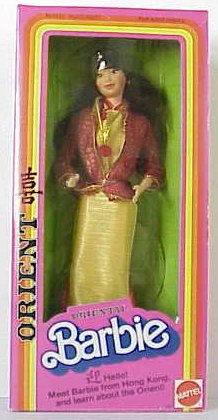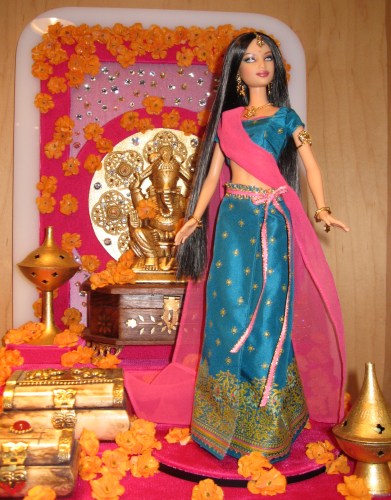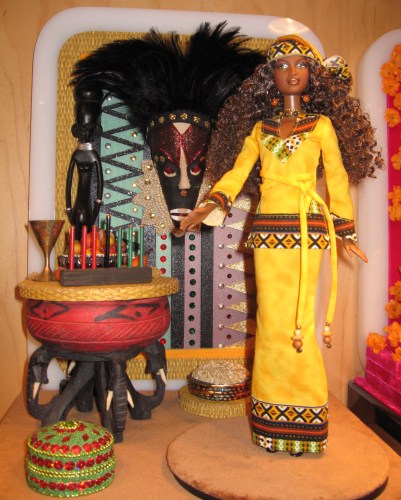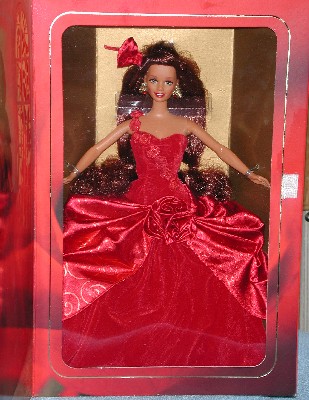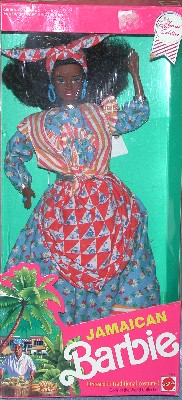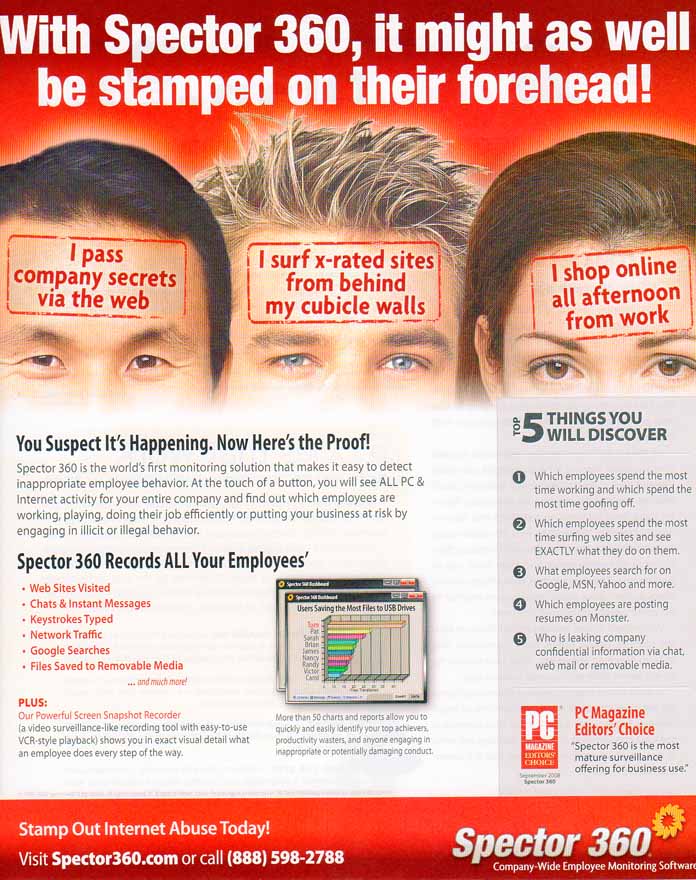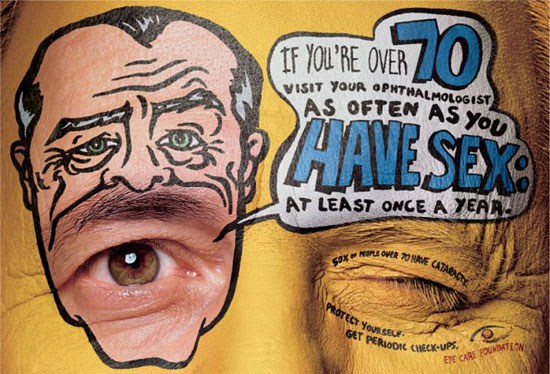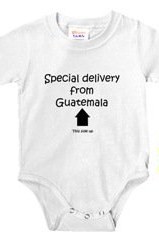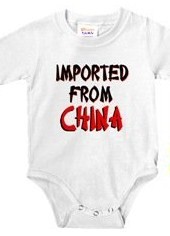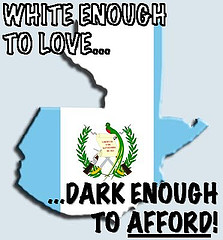Breck C. sent us this link to a collection of photographs of Harajuku Girls. Harajuku is a style for teenagers in a region of Japan (here is the wikipedia entry). I can’t think of a way to describe them that does them justice, so here are some pictures (found here, here, here and here):
In 2004, Gwen Stefani began touring with four women posing as Japanese Harajuku girls. Stefani’s Harajuku Girls serve as her entourage and back-up dancers. Here she is with four (Japanese?) women that she hires to be her Harajuku Girls (found here and here):
In the comments, Inky points out that Stefani says this about them in her song, Rich Girl:
I’d get me four Harajuku girls to
Inspire me and they’d come to my rescue
I’d dress them wicked, I’d give them names
Love, Angel, Music, Baby
Hurry up and come and save me
Stefani also has a Harajuku Lovers clothing line and a series of perfumes, one for her, and one for each Harajuku Girl:
I think that Stefani’s use of Asian women as props (they may or may not be Japanese) fetishizes Asian women and reinforces white privilege. The Harajuku Girls serve as contrast to Stefani’s performance of ideal white femininity. It makes me think of both this poster on colonial-era travel and this fashion spread.
Yet, Stefani’s been at this for four years and I can’t remember hearing any objections to her Harajuku Girls, even in feminist and anti-racist alternative media. Further, if her fashion line, perfume, and continued employment of the Harajuku Girls are any indication, people seem to think the whole thing is awesome. In the meantime, I bet she’s making bank on her clothing line and perfume. Where’s that money going?
Do you think my reading is fair?
And, if so, why do you think there’s been so little outcry?
For good measure, here she is performing with her “Girls”:
In our comments, SG asks that we include the following clarification:
This article is really misrepresenting a whole fashion scene and I would like to ask that you correct it- It is just perpetuating the idiocy and ignorance surrounding these styles. “Harajuku is a style for teenagers in a region of Japan”. “Harajuku style” Is a term coined by western media because they are too ignorant to actually research the names of these actual styles. Harajuku is not a style. It is a location. The females you have pictured are in Decora (and two in Visual Kei). The only “harajuku style” that exists is the fictional one made up by Gwen Stefani and the western media.
Thanks SG.
See also our post featuring other examples of ads and artists using Asians as props.

